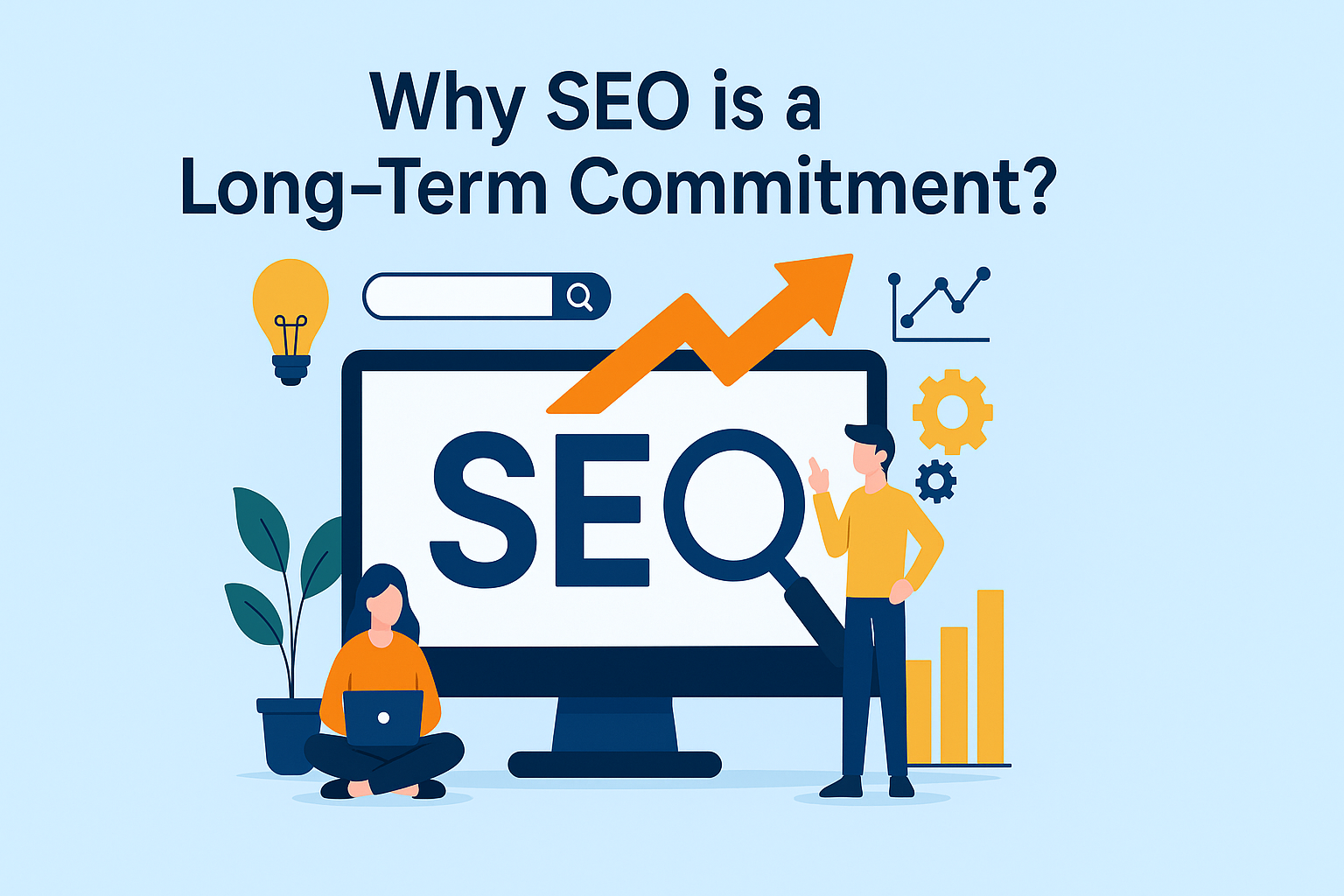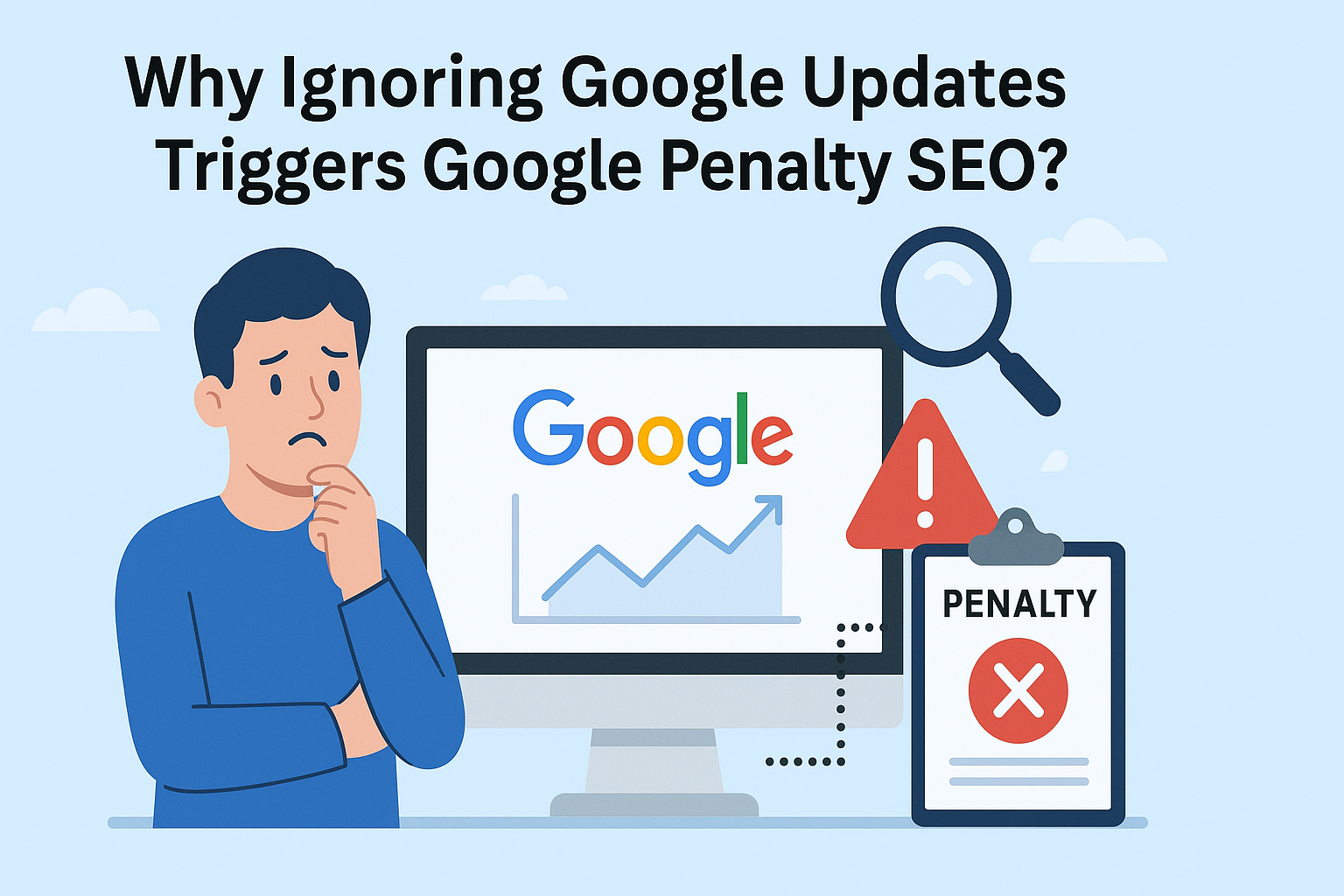In the ever-evolving digital ecosystem, Google remains the dominant force shaping how content is discovered, ranked, and consumed. Every few months, Google rolls out algorithm updates designed to refine how search results are presented. These updates are aimed at improving the user experience by prioritizing quality, relevance, and trustworthiness. However, ignoring these updates can have serious consequences—most notably, the dreaded Google penalty SEO.
Understanding how these algorithm changes affect your website’s visibility is not just important—it’s essential. This article explores why staying informed about Google updates is critical, how non-compliance can trigger a penalty, and what you can do to avoid it.
Table of Contents
Understanding Google Algorithm Updates
Google’s algorithms are complex systems that retrieve data from its search index and deliver the best possible results for a query. The search engine uses a combination of algorithms and numerous ranking signals to present web pages ranked by relevance.
Types of Google Updates
Google updates can generally be grouped into two categories:
- Core Updates: These are broad changes that affect the overall ranking processes.
- Targeted Updates: These focus on specific aspects such as page speed, mobile usability, content quality, or spam detection.
Each update adjusts how Google evaluates content. If your website fails to align with the latest guidelines, it may fall in rankings or be removed from the index altogether—resulting in Google penalty SEO.
What is a Google Penalty?
A Google penalty is a negative impact on a website’s rankings based on updates to Google’s search algorithms or manual actions by human reviewers. It is Google’s way of enforcing its webmaster guidelines and ensuring the quality of search results.
Types of Google Penalties
- Algorithmic Penalty: Automatically triggered when a site doesn’t comply with an algorithm update.
- Manual Penalty: Issued when a human reviewer finds a violation in the site’s content or practices.
Both types of penalties can drastically reduce your website’s visibility, affect traffic, and compromise long-term SEO goals.
Why Google Issues Penalties?
Google’s mission is to organize the world’s information and make it universally accessible and useful. To achieve this, it enforces a set of quality guidelines. Violating these guidelines—intentionally or otherwise—can result in a Google penalty SEO.
Here are common reasons for penalties:
- Thin or duplicate content
- Keyword stuffing
- Cloaking or sneaky redirects
- Buying or exchanging backlinks
- Hidden text or links
- Malware or spam
When you ignore Google updates, you risk falling out of compliance with evolving standards, increasing your vulnerability to penalties.
How Ignoring Google Updates Affects SEO?
1. Decrease in Organic Rankings
The most immediate impact of disregarding updates is a significant drop in search rankings. For instance, if your site isn’t mobile-friendly and Google rolls out a mobile-first indexing update, your rankings may suffer.
2. Loss of Organic Traffic
Lower rankings lead to reduced visibility. Ignoring updates means your site is less likely to appear in relevant searches, resulting in a drop in organic traffic.
3. Damage to Brand Authority
Search engine visibility is often equated with credibility. A drop in rankings due to Google penalty SEO may affect user trust, even if your content is accurate and valuable.
4. Wasted Marketing Investment
SEO is an ongoing investment. Failing to adapt to changes can nullify previous efforts, resulting in wasted time, budget, and resources.
Key Updates That Should Never Be Ignored
Panda Update
Focuses on content quality. Duplicate, thin, or keyword-stuffed content is penalized. Ignoring this could put your content in violation of quality standards.
Penguin Update
Targets manipulative link-building practices. Unnatural backlinks can lead to Google penalty SEO, even if they were built before the update was announced.
Mobile-First Indexing
With mobile devices accounting for the majority of traffic, this update prioritizes mobile-friendly websites. Ignoring it can severely impact rankings on mobile searches.
Page Experience Update
Introduces Core Web Vitals as ranking factors. These include metrics like page speed, interactivity, and visual stability. Neglecting these may cause your site to fall behind in competitive rankings.
Helpful Content Update
Aims to prioritize people-first content. Sites with low-value, unhelpful, or overly automated content are likely to face penalties. Ignoring this update risks triggering Google penalty SEO.
Signals You Might Be Under a Penalty
Not all drops in traffic indicate a penalty, but there are red flags to watch out for:
- Sudden decrease in keyword rankings
- Drop in traffic with no clear cause
- Messages in Google Search Console
- De-indexed pages
If you notice these symptoms, it’s important to investigate promptly and adjust your SEO strategy accordingly.
Why Staying Updated is a Preventive SEO Measure?
Search engine optimization is not a one-time task—it’s a continuous process. Staying current with Google updates helps you:
- Maintain search rankings
- Prevent compliance issues
- Improve user experience
- Avoid Google penalty SEO
- Adapt your strategy based on real-time insights
Ignoring updates sends a signal that your site is stagnant, outdated, or untrustworthy—all of which are harmful from an SEO standpoint.
Best Practices to Avoid Google Penalty SEO
1. Monitor Google Updates
Follow official channels like Google Search Central Blog. Keeping an eye on updates allows you to respond proactively instead of reactively.
2. Regular SEO Audits
Routine audits help identify weaknesses or outdated practices that could conflict with new updates. These audits should cover:
- Content quality
- Technical SEO
- Link profile
- Mobile usability
- Page speed
3. Prioritize High-Quality Content
Create content that is original, useful, and structured for readability. Align content with Google’s E-E-A-T guidelines (Experience, Expertise, Authoritativeness, Trustworthiness).
4. Build Natural Backlinks
Avoid link schemes or excessive guest posting for backlinks. Focus on earning links through valuable content.
5. Optimize for Mobile and Speed
Use responsive design, compress images, and leverage browser caching. Google’s mobile-first approach and speed-related metrics are crucial ranking signals.
6. Avoid Black Hat SEO Techniques
Practices like cloaking, doorway pages, and hidden text may yield short-term gains but will eventually lead to Google penalty SEO. Stick to ethical (white hat) strategies.
7. Use Structured Data Properly
Implement schema markup to enhance how your pages appear in SERPs. Incorrect or misleading structured data can lead to manual penalties.
Recovery from a Google Penalty
If you’ve already been hit by a penalty, don’t panic. Recovery is possible, but it requires a systematic approach:
- Identify the Cause: Use Google Search Console and third-party SEO tools to pinpoint what triggered the penalty.
- Fix the Issues: Remove harmful links, update or delete low-quality content, and correct technical errors.
- Submit a Reconsideration Request: For manual penalties, submit this after resolving issues.
- Monitor Progress: Keep tracking rankings and traffic to ensure recovery is on the right path.
- Stay Updated: Learn from the experience and stay current with future updates to avoid recurring issues.
Why SEO is a Long-Term Commitment?

Search engine optimization is not a one-and-done effort. It’s a long-term digital strategy that evolves with changing technologies, consumer behavior, and search engine algorithms. Ignoring Google updates at any stage of your SEO journey is like ignoring traffic signals while driving—it puts your digital assets at risk.
A solid understanding of how Google updates work and how to adapt to them is the best defense against Google penalty SEO. By maintaining an updated, compliant, and user-first website, you not only avoid penalties but also establish lasting visibility and trust.
Final Thoughts
The cost of ignoring Google updates can be steep. From reduced visibility and lost traffic to the eventual imposition of a Google penalty SEO, the risks are real and preventable. By staying informed, following ethical SEO practices, and focusing on user experience, you ensure long-term sustainability in search results.
In the world of SEO, change is the only constant. Adaptation is not optional—it’s necessary.
Frequently Asked Questions (FAQ)
1. What is a Google penalty in SEO?
A Google penalty is a negative impact on a website’s search rankings due to violations of Google’s webmaster guidelines or failure to comply with algorithm updates.
2. How do I know if my site has been penalized?
Look for sudden drops in traffic or rankings and check Google Search Console for any manual action messages.
3. Can ignoring updates really lead to a penalty?
Yes. Ignoring updates may cause your site to fall out of compliance, triggering algorithmic penalties or manual reviews.
4. What are common triggers for Google penalty SEO?
Common causes include duplicate content, unnatural backlinks, keyword stuffing, and non-mobile-friendly design.
5. How long does it take to recover from a Google penalty?
Recovery timelines vary. Algorithmic penalties may require you to wait for the next update, while manual penalties can be lifted after a successful reconsideration request.
6. Are Google penalties permanent?
No. With proper fixes and a clear reinclusion request (in manual cases), penalties can be lifted and rankings restored.
7. Should I worry about every Google update?
Not necessarily, but it’s important to understand each update and assess its potential impact on your website.
8. Is hiring an SEO specialist necessary to avoid penalties?
While not required, working with someone knowledgeable in SEO best practices can help you stay updated and avoid costly mistakes.



